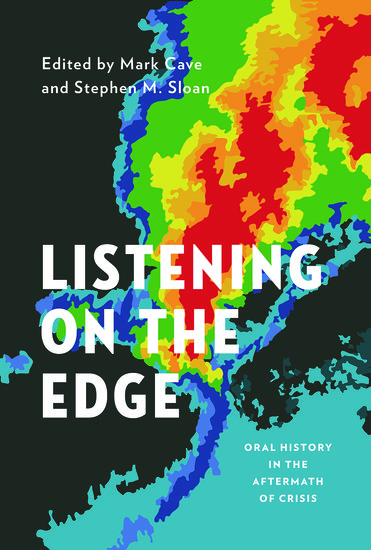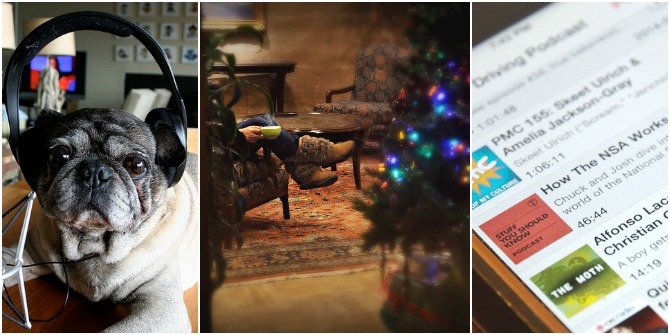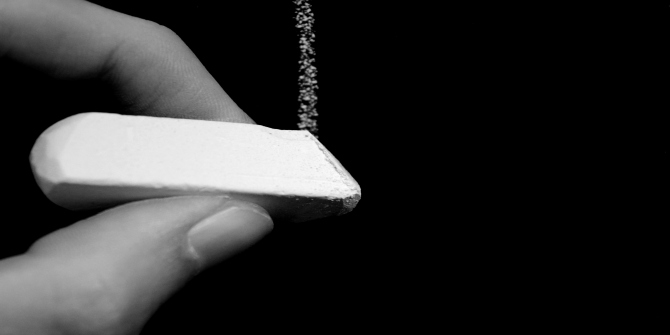
Listening On The Edge presents excerpts from oral histories done after twelve world crises, followed by critical analyses by the interviewers. Additional analytical chapters set the interviews in the contexts of pyschoanalysis and oral history methodology. This book reminds us that the past is never finished and that the present cannot be ignored, and that telling and listening to testimony “amid chaos” is extremely important, writes Jas Kaur.
 Listening On The Edge: Oral History In The Aftermath Of Crisis. Mark Cave and Stephen M. Sloan. Oxford University Press. 2014.
Listening On The Edge: Oral History In The Aftermath Of Crisis. Mark Cave and Stephen M. Sloan. Oxford University Press. 2014.
“Crisis is a historical constant” writes oral historian Mark Cave, one of the editors of Listening On The Edge: Oral History In The Aftermath Of Crisis, by way of introduction. While crisis takes different forms – from natural disasters to school shootings, from genocide to revolution – one of its constants its ability to rupture lives and reorient people in the world, and in relation to others, in ways which they never imagined. After the spectacle, when the global outpouring of grief turns to crises new, those who have suffered are left to pick up the shattered fragments of their lives and to make sense of a world forever changed.
How and what we come to know about any given crisis is delivered to us across a spectrum of time and methodologies: there is the immediate reportage provided by 24-hour rolling journalism, the mid-term insights given us by psychoanalysis, and the long-term analysis of the social sciences. Between and across these is the work of oral history, whose focus lies on illuminating the wider event through the experiences, emotions, and perspectives of the people who have lived through them. The contributors to this collection all recognise that it is no longer sufficient to establish just a museum of remembered pasts. Rather, the living present and those on the edge of crisis and survival must have their voices heard here and now.
Part 1 of Listening On The Edge consists of six chapters which give the reader insight into a selection of some of the world’s most recent and devastating times of crisis: the trauma of survivors in Bosnian refugee camps; Afghani refugees trying to re-build their lives in Australia in a suspended state of grief and hope; young American adults navigating their sense of self in the world after surviving school shootings; Cubans detained in the US after fleeing their homeland; and survivors of the Rwandan genocide. Here are people of varied contexts and sites who have faced inhumanity and are left coping with what psychoanalyst Gislaine Boulanger calls the “continuing and unfinished present”.
In Boulanger’s chapter of this name, we are provided with a thoughtful summary of variations at the interstices of telling and listening to lives that endure crisis which students will find both useful and fascinating. Boulanger covers how oral historians seek to gain the trust of their respondents, how they adapt interviews and techniques to the conditions and contexts of their respondents’ lives and ways of talking, and how they seek to make sense of emotions in ways that not only illustrate an individual’s harrowing tale but that illuminate and resonate beyond to create meta-narratives, social understanding, and perhaps even policy changes. Boulanger also considers the role of memory and trauma, the motives behind talking and listening and the narratives that emerge from these, and the interstitial space occupied by people who have endured crisis and met death but who remain tangentially among the living, and into which oral historians and psychoanalysts tread.
Oral history, Boulanger argues, is bound up in expectations of a product – a testimony, a story, that disturbs social knowledge – while psychoanalysis immerses itself in process. It is a shame that Boulanger is so intent on distinguishing between the two disciplines in this way. For one thing, and this will be evident to those of an anthropological persuasion, the terms of endearment between process and teleology are much closer than Boulanger allows, and have been subject to anthropological theorising for many decades, with a deepening resurgence of the debate between cosmological and immanent frames in 2014 (See, for example, Matt Hodges (2014) “Immanent anthropology: a comparative study of ‘process’ in contemporary France” in Journal of the Royal Anthropological Institute (N.S.), 33-51; and Morten Nielsen (2014) “The negativity of times. Collapsed futures in Maputo, Mozambique” in Social Anthropology, 22(2): 213–226.) And indeed it does a disservice to separate out two disciplines so enmeshed in the rich and tortured seams of people and their trauma.

In Part II the book successfully grants integrity to personal individual experiences while also making these resonate beyond the personal – to the social, historical, political planes, and ultimately at a level of humanity from which none of us can stand apart. The book is stronger for its inclusion, reminding us that while everything may be in the past for some, their story must be given a voice, a space, a resonance that is not forgotten.
In “Smile Through The Tears”, Montreal-based Rwanda genocide survivor Rupert Bazambanza tells the story behind his graphic novel on the genocide, and in particular that of his family friend Rose Rwanga. Rose’s entire family was killed in the genocide: “for her, everything is in the past” says Bazambanza. Rose does not smile a smile of happiness, but there remains what Bazambanza calls a “glimmer of a smile” – one which is called upon when remembering a life once happily lived, even if under pressure and tension. One’s loved ones were alive then, while now one exists in the shadow of deaths witnessed while awaiting one’s own final release.
Bazambanza feels that making these stories of crisis public through the graphic novel is “a responsibility, a personal duty” to those that lost their family. Amid the distressing and powerful images evoked through the chapter, this is perhaps one of the most haunting admissions: that the obligation to share stories of suffering is not simply one felt by professional oral historians, it is also felt keenly by those who bow their heads in the face of suffering and loss they regard as more complete than their own.
Collecting Bazambanza’s testimony for the Montreal Life Stories Project, oral historian Steven High reflects on key parts of the narrative that transcend the individual, including the eclipsing nature of genocide, the problematic aspects of telling the story of an ethnic-based experience when those ethnic categories are recognised as Belgian colonial inventions, and the inaction of an international community that left a country to descend into sustained genocide. High thoughtfully comments on the responsibility that Rwandans feel towards helping prevent other imminent genocides, whether through peacekeeping or in this case through an accessible graphic novel.
Listening On The Edge is a deeply disturbing and upsetting book, and for this reason alone it deserves to be read. It is true that I did not approach or finish the book with a better understanding of oral history as a discipline in its own right – and perhaps rightly so, given its self-confessed overlap with so many others, including journalism, psychology, history and anthropology. Neither was I convinced that the commentary sections following each testimony offered the kind of rigorous analysis that ethnographers like myself are routinely expected to provide. And in these respects, the book has missed a really wonderful opportunity to put oral history on the methodological and analytical map. However, that is not necessarily its stated aim.
The book is a must-read. It is indispensable to scholars across a range of disciplines who seek to unearth experience on the edge of crisis, and who cherish the opportunity to give voice to raw emotion, perspective, atmosphere and subjectivity in a way that engages their scholarly sensibilities along with their moral responsibilities. That said, it does not make for easy reading, but it does begin to demonstrate how interwoven our personal lives are with the world around us, and how resonant a lone voice can and ultimately ought to be as an instrument of social remembering, of challenging ‘history’, of changing policy.
Finally, the book is also a fine effort in reminding us that the past is never finished and that the present cannot be ignored, and that telling and listening to testimony “amid chaos” – as co-editor Stephen Sloan describes – is extremely important. The urgency with which oral history is trying to embed itself in the modern world and in discourses of voice and visibility is impressive and worth taking notice of.
Jas Kaur is a PhD student at the School of Oriental & African Studies in London. She is writing a biography of the ethnic paradigm in Fiji, based on ethnographic fieldwork on the political and affective dimensions of coups and conflict, and a re-imagining of the ethnographic present and the relationship of time, history and context to anthropology. You can follow her on Twitter @missjaskaur or read her blog on Fiji at fijimuse.wordpress.com. Read more reviews by Jas.








2 Comments